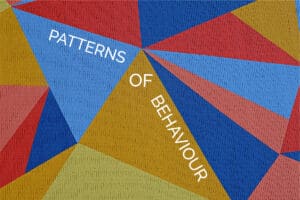My friend recently got onto a plane and was sitting next to, let’s call him, Mr Two Face. The kind that takes up your leg room. Dusts their food on your side without apologising. Is rude to the flight crew. You know the kind. They think they’re bigger than the game.
During the flight my friend was intrigued to find out who Mr Two Face is? After an ever so slight head turn, they found him browsing a website on his laptop. My friend then proceeded to search the same website on their phone. What they found was a philanthropy company, run by ‘you know who’ – Mr Two Face.
Hmm… something isn’t adding up. Save the world, but be a jerk??!!
Whether we like it or not, you represent the brand you are working with, in every moment. It used to be that you shut up shop at five and go back to being the ‘outside of work’ person, but these days are long gone.
In 2022, Kayne West was dropped by 12 brands after his antisemitic remarks. In 2022, Elon Musk began his self promoted sabotage of Twitter. In 2015, the US Environmental Protection Agency found 590,000 Volkswagen diesel motor vehicles were fitted with defeat devices to cheat on emission tests. And how can we go past some of the major religions and the brand damage that has been caused over the past decades.
This is not a discussion about how a brand (or brand advocate) behaves or is perceived or tracked on social media, yes this plays an obvious big role, but brand extends to all stakeholder touch points and interactions.
Creating and building a brand of significance and value requires the audience/s to not only engage with the brand but to see the brand as an important part of their own identity and status.
If someone like my friend sees a misrepresentation of a brand and what it claims to stand for, it creates damage. It might start small, but the truth eventually reveals itself. This doesn’t mean you have to change who you are (though it may if you want to stay relevant), but what it does show, is the importance of alignment.
You may think this is only for the big brands, but if you have staff, investors, suppliers, etc, then it applies to you too. To get an initial read on brand sentiment a simple question to ask: Do your staff take pride in and happily share around the BBQ who they work for?
So what does a brand actually do? (Note, a logo is not a brand. The logo represents everything the brand stands for if you tell and nurture your story effectively and consistently).
According to Bernadette Jiwa, author of Marketing: A Love Story, a brand:
- Creates meaning around your product and service
- Determines what you sell, where and when
- Dictates the price range you can sell at
- Influences the kind of customers you can sell to
- Changes how people feel about commodities
- Sets expectations
- Affects the kind of staff you can attract
- Demonstrates your values
- Shapes business models
- Enables loyalty, connection, belonging and love
The all encompassing role of a brand is the reason why conversations in our boardrooms are deepening. We don’t have to look too far to see that the ‘meaning economy’ (coined by John Hagel and John Seely Brown, authors of The Power of Pull) has taken centre stage from the traditional push economy (which focuses on mass production and distribution).
Love or loathe him, this is a video of Jeff Bezos talking about why Amazon is a customer company (versus a competition company) and how this ethos has continued when diversifying into new markets.
Appendix:
Kayne West dropped by 12 brands
Volkswagen cheat on emissions
Bernadette Jiwa, Marketing: A Love Story
John Hagel and John Seely Brown, The Power of Pull






